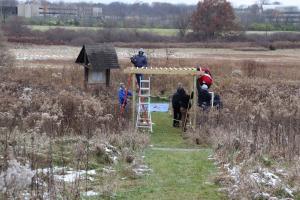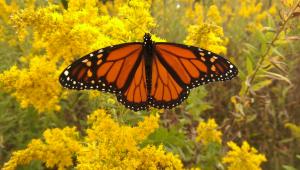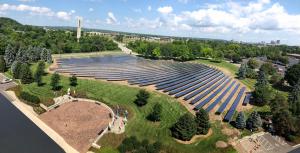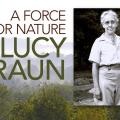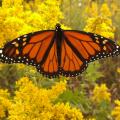Native plants evolved in our area, under our climatic conditions, and tend to thrive if given their preferred amount of moisture and sunlight. Of Ohio's 2300 or so vascular plant species, nearly a quarter are non-native, having been introduced to the state after 1750. Of the 500 or so non-native plants a handful are invasive, meaning they readily out-compete other plants in natural areas. Common examples are bush & Japanese honeysuckle (Lonicera maackii & Lonicera japonica), garlic mustard (Alliaria petiolata), multiflora rose (Rosa multiflora) and autumn olive (Elaeagnus umbellata). Ensuring the success of native plants in our landscapes means ensuring habitat for wildlife and the healthy functioning of ecosystems.
Eagle Scout candidate Gavin Boyd helped realize a project that's been on our wish list for quite a while - he built a new arbor to display native vines along the path to the labyrinth. The potential for vines in native plant gardens and restoration projects is often overlooked and the new arbor will be an educational point along the trail, emphasizing these plants’ roles in supporting pollinators, hosting insects, providing fruit and enhancing natural beauty. Thank you, Gavin!
Read more
Learn to conserve water and energy, and provide habitat with native plantings that enhance local ecology and lower maintenance. A free three-session series.
Read more
First published by the Hanley Sustainability Institute at the University of Dayton. Read more




